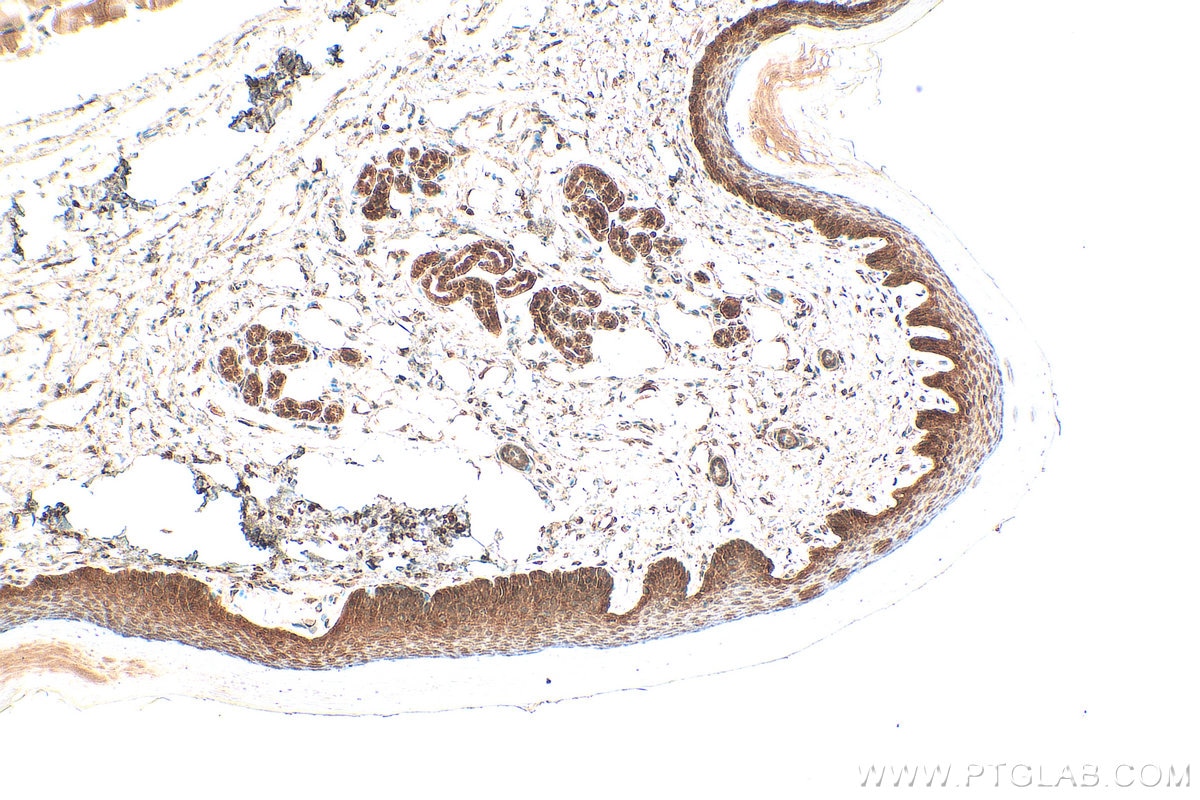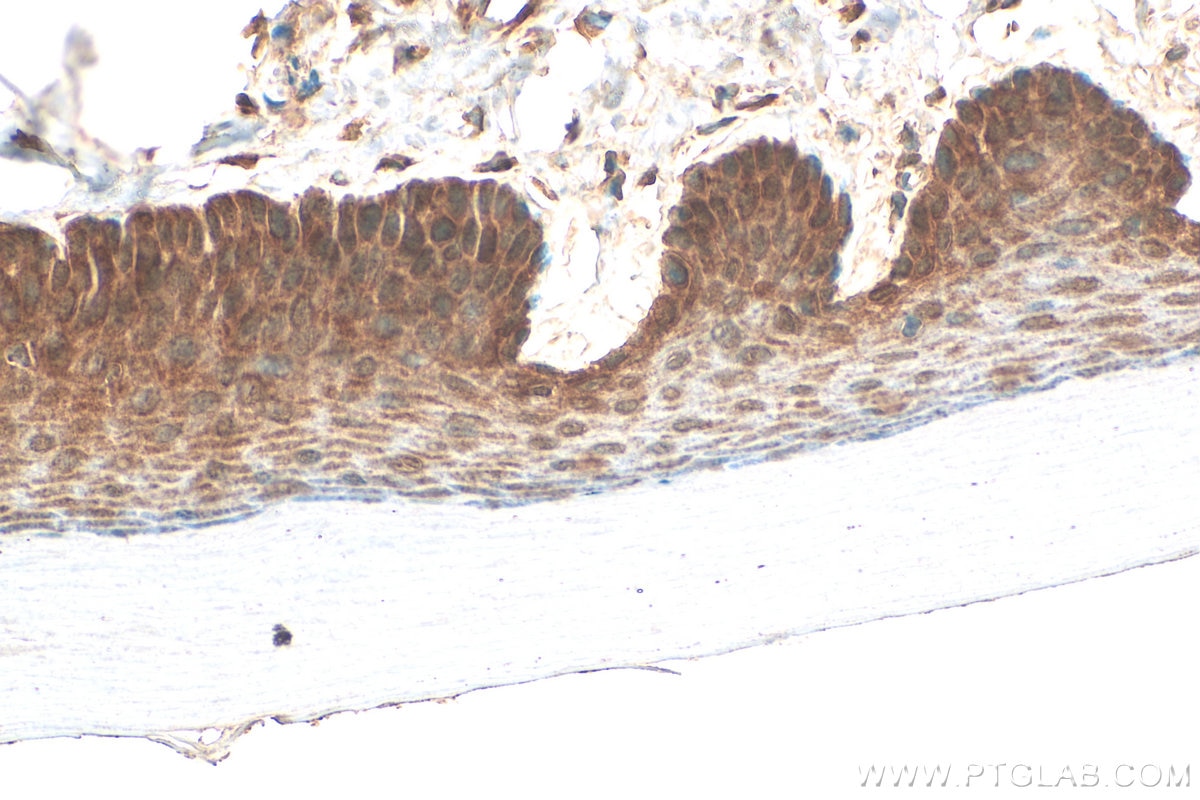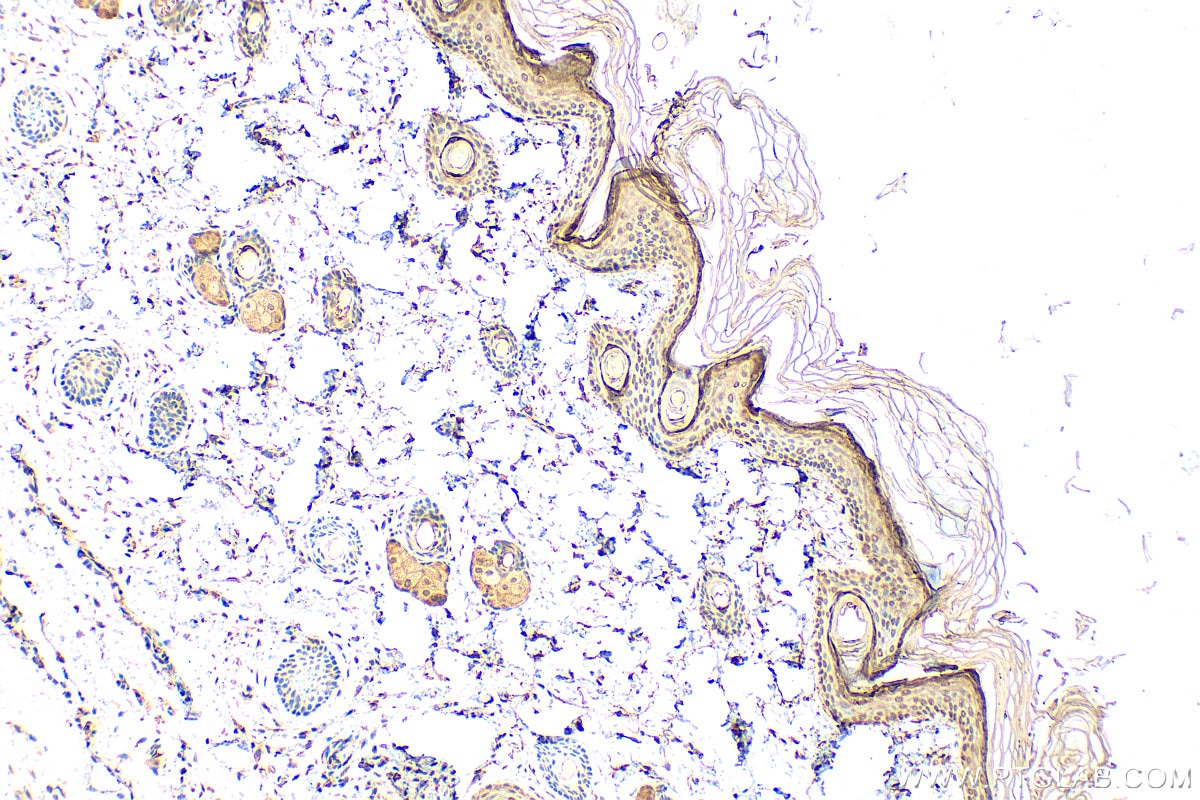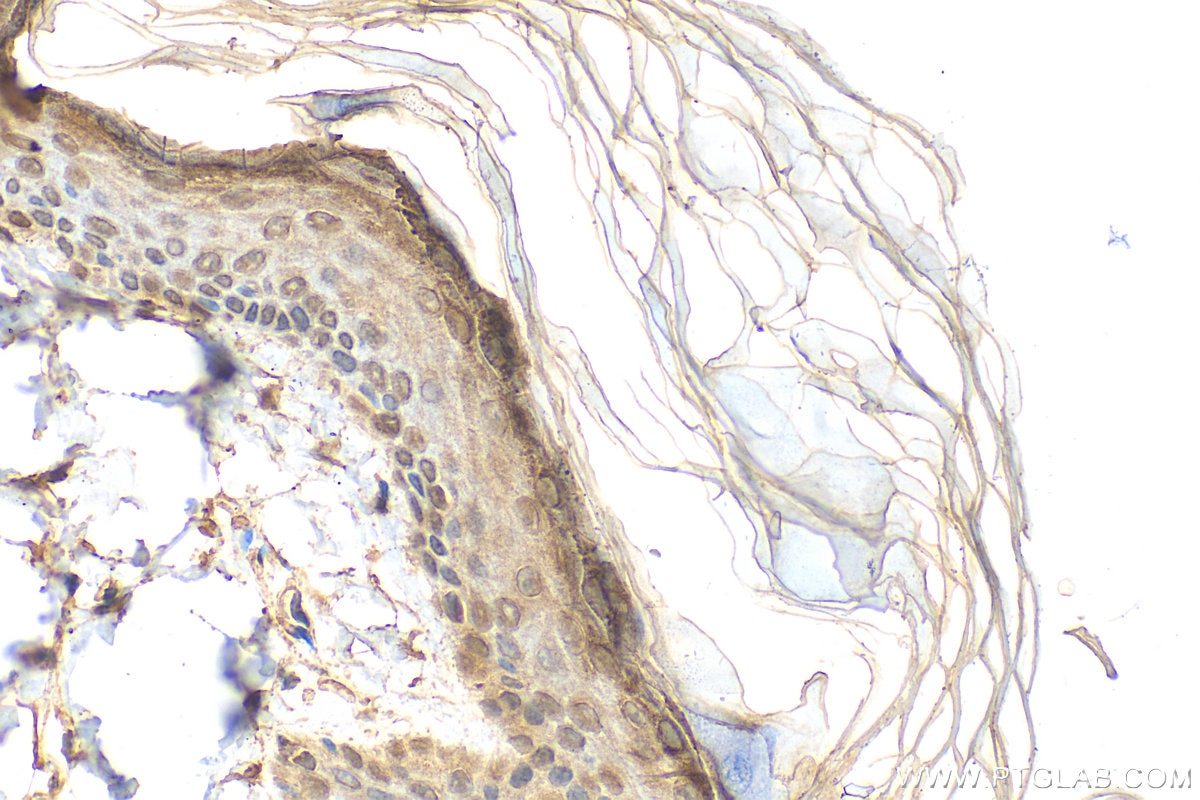Tested Applications
| Positive IHC detected in | mouse skin tissue, human paracancerous tissue of skin Note: suggested antigen retrieval with TE buffer pH 9.0; (*) Alternatively, antigen retrieval may be performed with citrate buffer pH 6.0 |
| Positive IF/ICC detected in | A431 cells |
Recommended dilution
| Application | Dilution |
|---|---|
| Immunohistochemistry (IHC) | IHC : 1:50-1:500 |
| Immunofluorescence (IF)/ICC | IF/ICC : 1:50-1:500 |
| It is recommended that this reagent should be titrated in each testing system to obtain optimal results. | |
| Sample-dependent, Check data in validation data gallery. | |
Published Applications
| WB | See 17 publications below |
| IHC | See 11 publications below |
| IF | See 12 publications below |
Product Information
55439-1-AP targets Loricrin in WB, IHC, IF/ICC, ELISA applications and shows reactivity with human, mouse, rat samples.
| Tested Reactivity | human, mouse, rat |
| Cited Reactivity | human, mouse, rat |
| Host / Isotype | Rabbit / IgG |
| Class | Polyclonal |
| Type | Antibody |
| Immunogen |
Peptide Predict reactive species |
| Full Name | loricrin |
| Calculated Molecular Weight | 26 kDa |
| GenBank Accession Number | NM_000427 |
| Gene Symbol | Loricrin |
| Gene ID (NCBI) | 4014 |
| RRID | AB_2881332 |
| Conjugate | Unconjugated |
| Form | Liquid |
| Purification Method | Antigen affinity purification |
| UNIPROT ID | P23490 |
| Storage Buffer | PBS with 0.02% sodium azide and 50% glycerol, pH 7.3. |
| Storage Conditions | Store at -20°C. Stable for one year after shipment. Aliquoting is unnecessary for -20oC storage. 20ul sizes contain 0.1% BSA. |
Background Information
Loricrin, also named LOR and LRN, is a major component of the cornified cell envelope (CE) expressed late in epidermal differentiation in the granular layers of normal skin. This antibody is specific to Loricrin.
Protocols
| Product Specific Protocols | |
|---|---|
| IF protocol for Loricrin antibody 55439-1-AP | Download protocol |
| IHC protocol for Loricrin antibody 55439-1-AP | Download protocol |
| Standard Protocols | |
|---|---|
| Click here to view our Standard Protocols |
Publications
| Species | Application | Title |
|---|---|---|
Cell Death Differ ENKD1 promotes epidermal stratification by regulating spindle orientation in basal keratinocytes. | ||
EMBO Rep Regulation of epidermal differentiation through KDF1-mediated deubiquitination of IKKα. | ||
Br J Pharmacol FGF21 promotes migration and differentiation of epidermal cells during wound healing via SIRT1 dependent autophagy. | ||
Allergol Int YTHDF1 regulates the proliferation and differentiation of keratinocytes via the PI3K/AKT signaling pathway in atopic dermatitis | ||
J Nanobiotechnology Exosomes from human induced pluripotent stem cells-derived keratinocytes accelerate burn wound healing through miR-762 mediated promotion of keratinocytes and endothelial cells migration. | ||
J Ethnopharmacol Topical application of Artemisia annua L. essential oil ameliorates 2,4-dintrochlorobenzene-induced atopic dermatitis in mice |
















